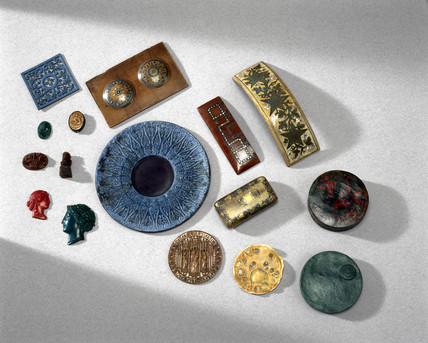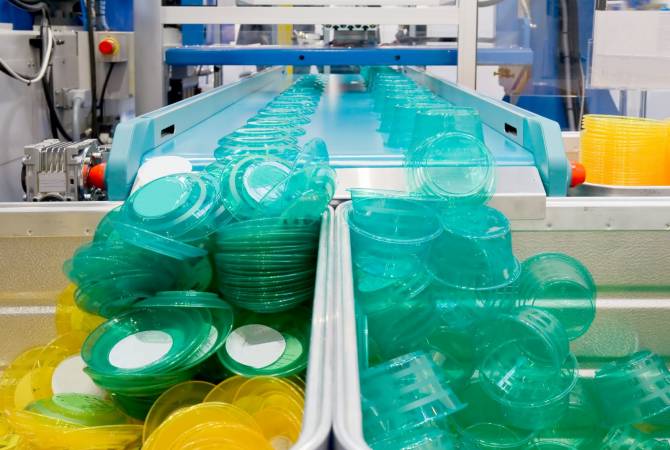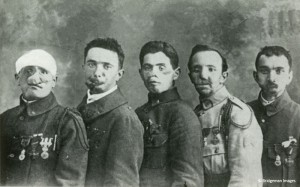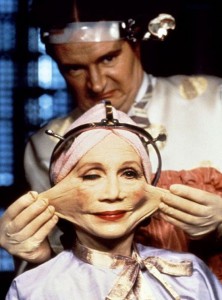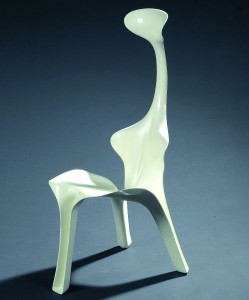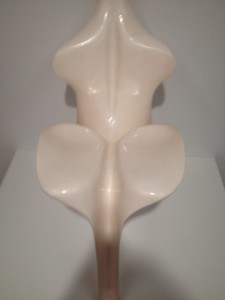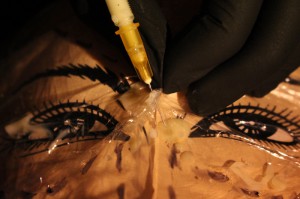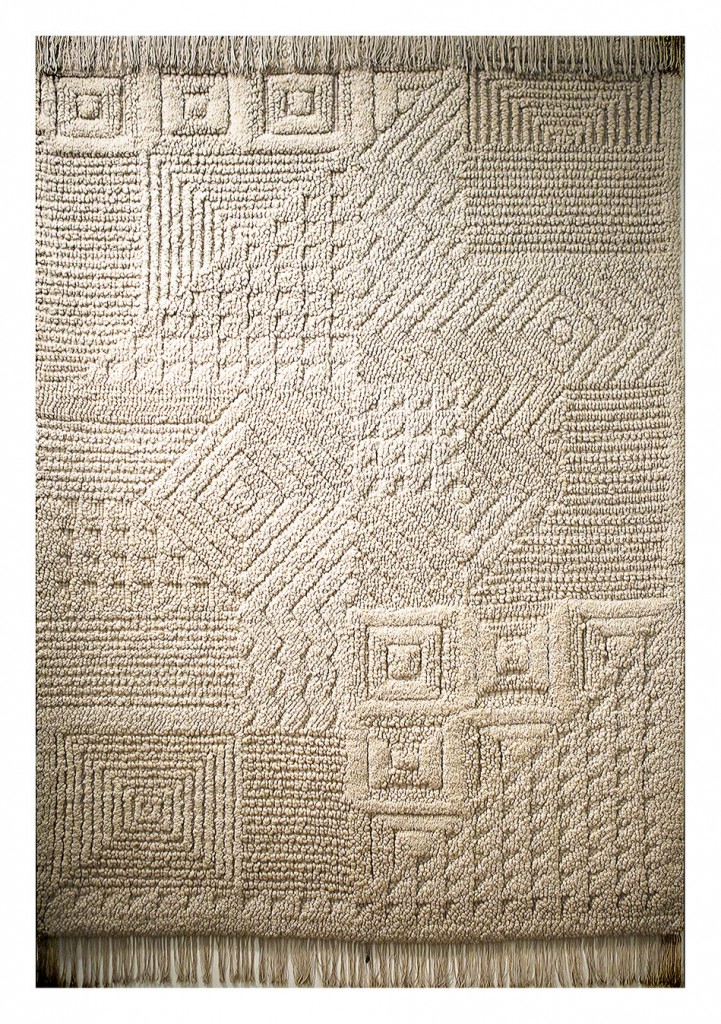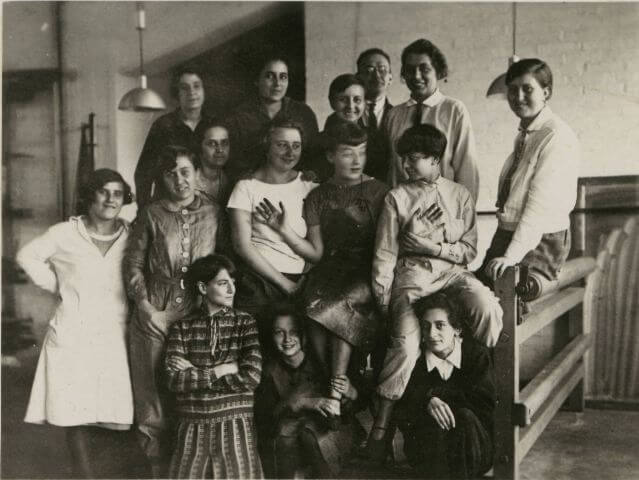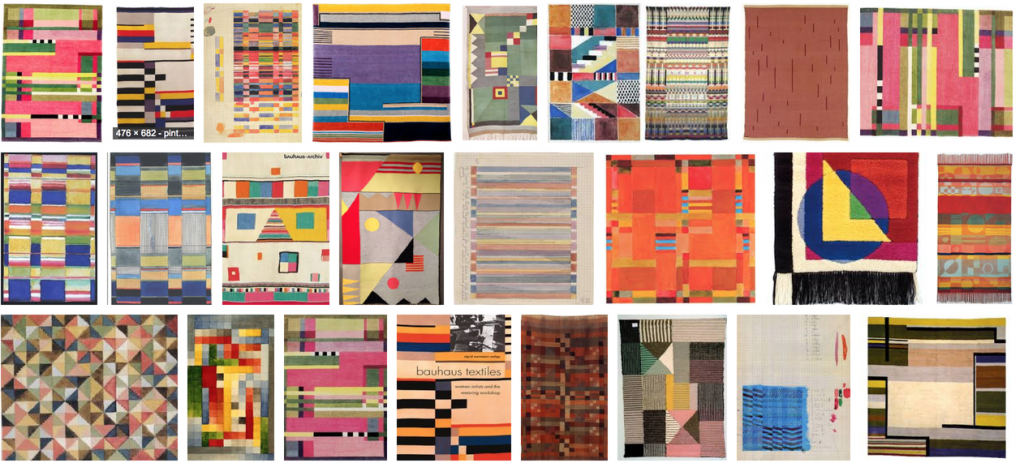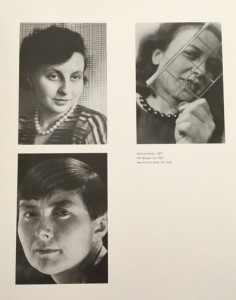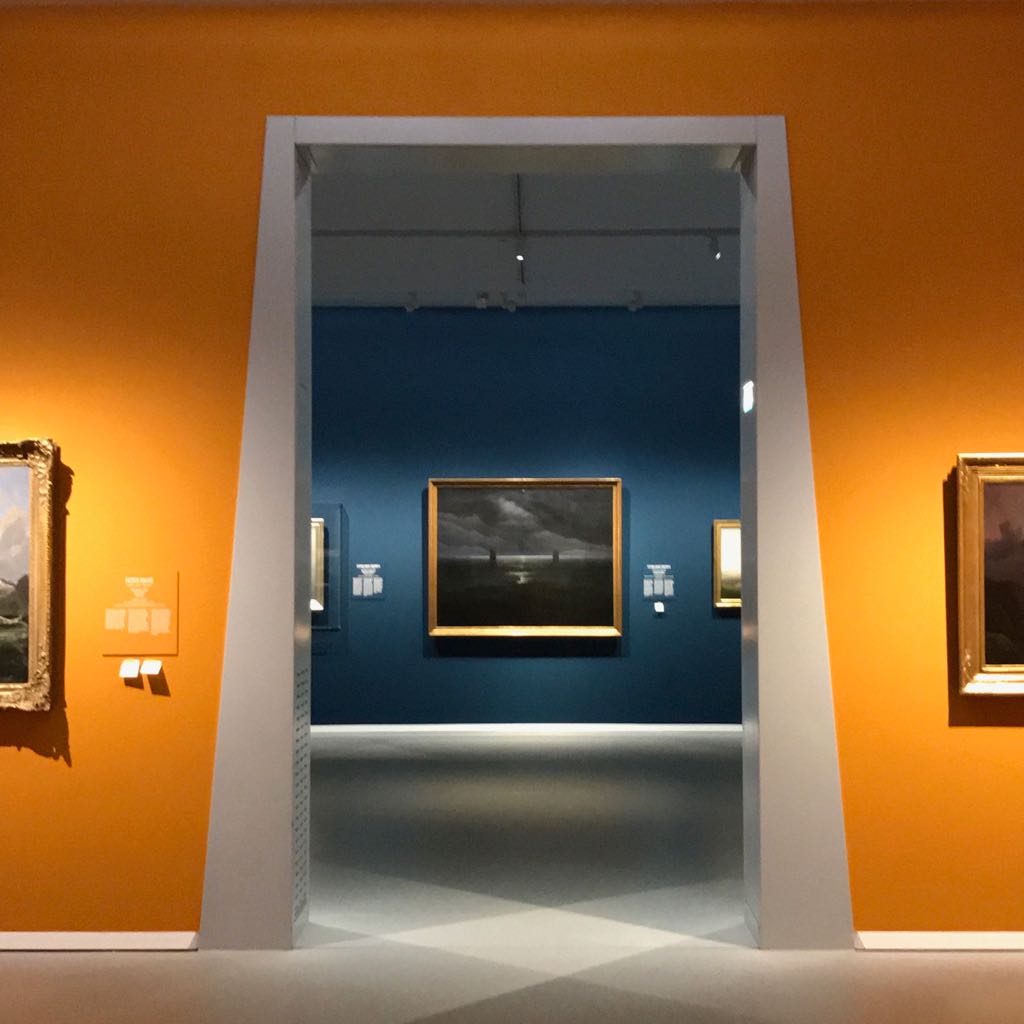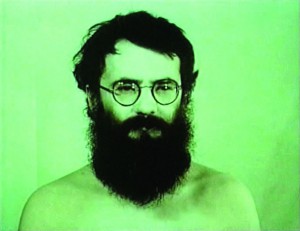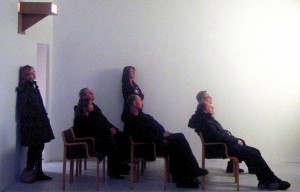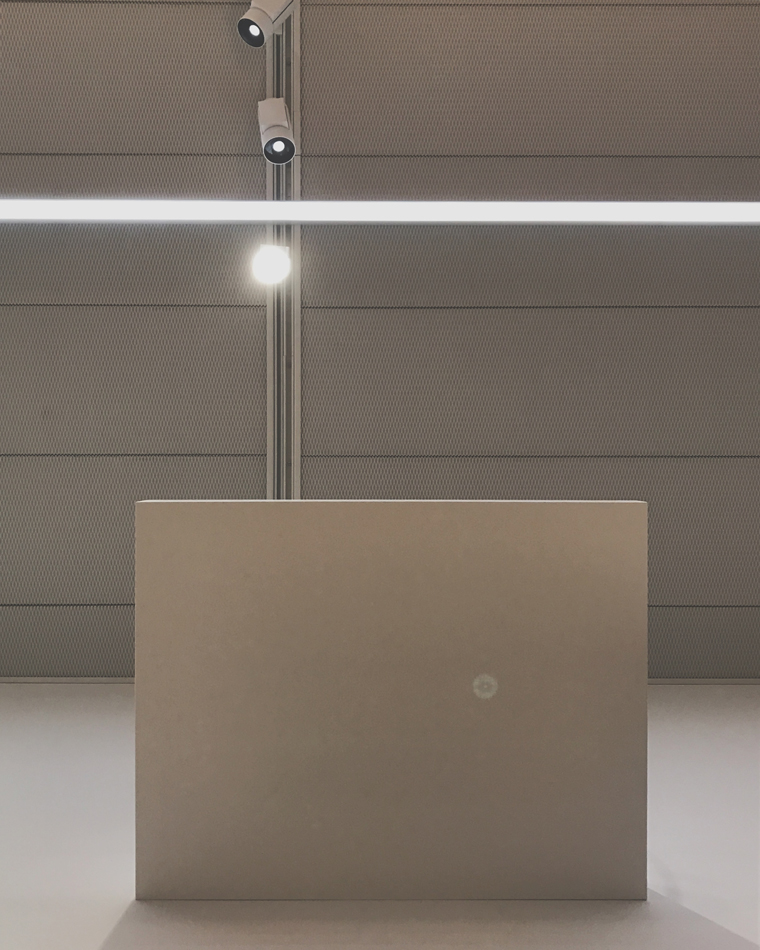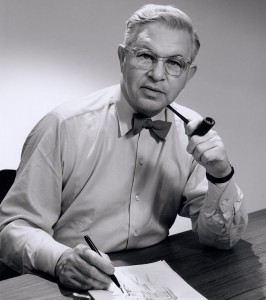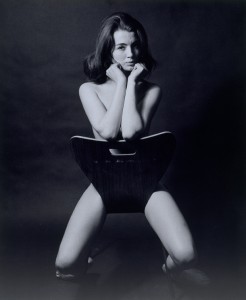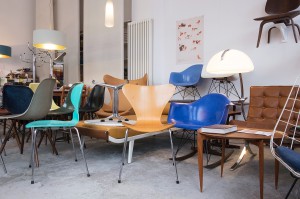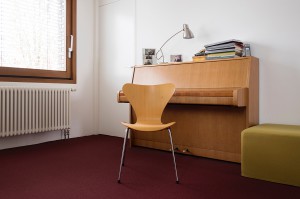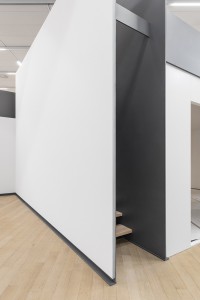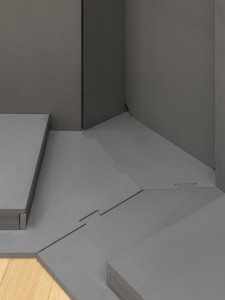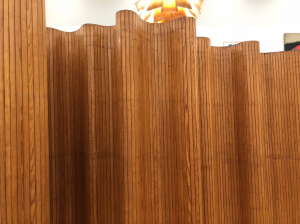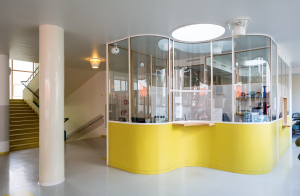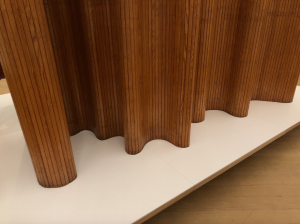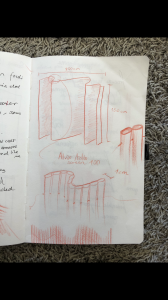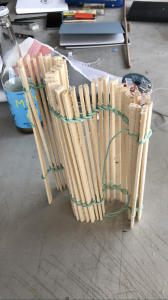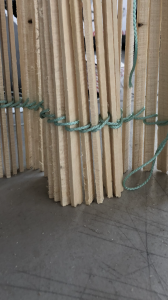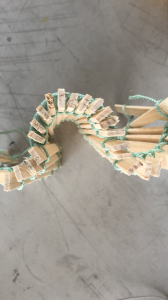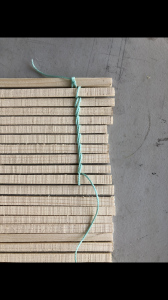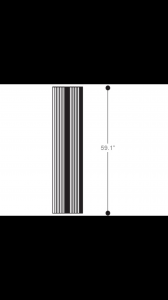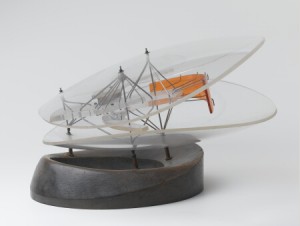When you look around in the modern world, the plastic materials by which it is formed are inevitable to the eye.
From everyday objects like the interior of households and infrastructural facilities to the sex industry and medical surgery, synthetics have become a big part of humans and the human/animal world.
But how did this came to be and what will the future be of this plastic world with its benefits and downsides.
(left- Alexander Parkes, right- Parkesine objects )
Before plastic became fully synthetic in the way we know it nowadays, cellulose found in plants was the base material for the discovery of modern plastics.
This discovery was made in 1862 by Alexander Parkes who invented the material he named “Parkesine“.
Parkesine was made from in alcohol dissolved nitrocellulose mixed with oil or camphor wax which created a transparent, moldable material which maintained shape after cooling down.
Therefore it was used to make things like combs, stamps, and buttons.
The American brothers Hyatt picked-up this idea and created a variation of this Parkesine in 1869 they named celluloid by pulverizing camphor an nitrocellulose separately, adding pigments to the nitrocellulose, after mixing it was pressurized to remove water and then molded with extreme heat.
It was used as a replacement for ivory, specifically ivory billiard balls.
Celluloid became a great success and eventually made it possible for the film industry to be born.
(left-celluloid film, right-bakelite factory)
These two inventions can be seen as the ancestors of the modern plastic society, nevertheless, it only came to be because of the first fully synthetic plastic, meaning no molecules that can be found in nature are used.
This first fully synthetic plastic was called Bakelite.
Invented in 1907 in the USA by Leo Baekeland in the search for a synthetic insulator, he found a way to control the condensation reaction of a phenol-formaldehyde mixture and stop this reaction while remaining liquid.
This could be formed into different stages with stage A, the first stage, directly making it into usable plastic.
Stage B, making it into a solid state with the possibility to make it into powder and soften it with heat.
Stage C is where stage A or B are being heated under pressure and the result of this is what he called Bakelite.
Bakelite appeared to be a perfectly suited material for the purpose of insulation as it was heat resistant and could be manufactured in mass-production as it could be molded quickly.
This last fact and the fact that it was fully synthetic opened the doors to a world of mass-produced synthetics, the plastic world we live in.
Soon new materials followed this creation with the invention of polystyrene in 1929 (used for electronics like refrigerators, microwaves and tv, medical equipment and packaging), polyester in 1930 (used for clothing), polyvinylchloride (PVC) (used for pipes, electrical insulation and clothing) and nylon in 1935 (mostly used for clothing and parachutes).
(left-nylon parachute, right-plastic mass-production)
During the 30’s of the 20th century, these synthetic products were seen as extremely glamorous and beautiful but still, all these materials did not completely infiltrate society during that time.
While used for a lot of military equipment during the second world war, synthetic products really became part of everyday life after the end of the war when the manufacturers of plastic products had to find a way to stay in the business and therefore aim at people and everyday life. Because of the low price, moldability and the way it could be mass-produced, it is not more than logical that plastic became such a big leading part of the capitalist consumer society.
(left- WW1 plastic surgery, right-plastic surgery movie brazil1985 )
Like the plastics, humans are moldable as well, changing along with new inventions. During the same period as the development of synthetics, doctors were forced to find a way to repair the extreme damage done to soldiers during the first world war.
Never before had there been so many heavily wounded soldiers whom all needed treatment for their facial wounds, burns and lost limbs and with the development of anesthetics, surgeons could develop new techniques without the patients experience pain during this operation.
Yet the use of plastic surgery for the beauty industry really kicked off in the 1950’s when the first breast implants were used to enlarge the female breasts.
This was done by injecting it with the liquid, synthetic plastic called silicone and in the 60’s by implanting a bag-like version.
In the 70’s liposuction (removing fat) was developed and not long after that botox was tested on humans for the first time.
Botox temporarily relaxes and smoothes wrinkles by blocking signals from the nerve to the muscles, this gives the user a smooth, young and Barbie-like face.
With this slow infiltration of plastics into the human body, the birth of the plastic human became a fact.
Largely stimulated and promoted by the cosmetic glamour industry.
(left- plastic waste mountain, right- plastic ocean)
Due to this rise of plasticity, synthetics slowly took over the world.
The waste created by the plastic consumer society has already created big islands in the ocean intervening with the animal and human world, fish-eating tiny plastic particles, humans eating fish.
Entering our body through food and cosmetic products, plastics are now even detectable in our blood influencing our hormones.
Humans becoming deformed from natural appearance due to cosmetic surgery in their striving for perfection, plastics infiltrating our body and system and the extreme use of plastic products in modern life could in my opinion only lead to the beginning of a more extreme, new plastic human being disbanded from its nature.
(left/right- Floris chair)
To me the in 1968 made Floris chair by Günter Beltzig, which was the starting point for this research, is the perfect example of what has happened and may come.
This chair is made out of fiber reinforced plastic and molded into an alienated human shape which could only have happened because of all the developments and inventions mentioned in the first paragraphs of this research.
The shape of the chair gives the impression that it is a plasticized human being or at least that it is made for such a human, as it seems to be made for a specific kind of person.
Like with the shoe of Cinderella, it should fit perfectly to be a match and not to lose all its comfort.
Is it not possible that it is the plastic ‘perfect’ human of the future who will fit perfectly in this piece of furniture, alienated from his natural self in its plastic world.

